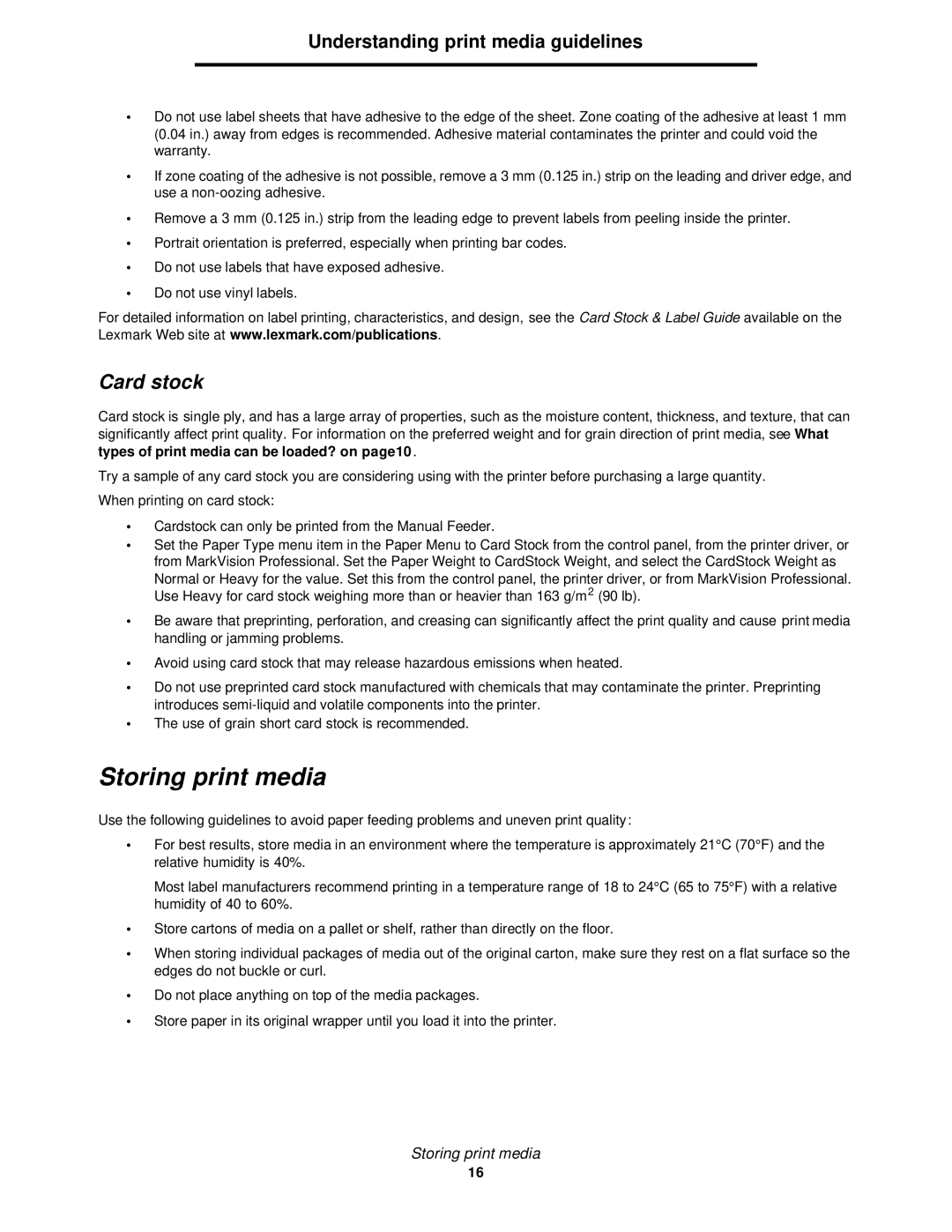Understanding print media guidelines
•Do not use label sheets that have adhesive to the edge of the sheet. Zone coating of the adhesive at least 1 mm (0.04 in.) away from edges is recommended. Adhesive material contaminates the printer and could void the warranty.
•If zone coating of the adhesive is not possible, remove a 3 mm (0.125 in.) strip on the leading and driver edge, and use a
•Remove a 3 mm (0.125 in.) strip from the leading edge to prevent labels from peeling inside the printer.
•Portrait orientation is preferred, especially when printing bar codes.
•Do not use labels that have exposed adhesive.
•Do not use vinyl labels.
For detailed information on label printing, characteristics, and design, see the Card Stock & Label Guide available on the Lexmark Web site at www.lexmark.com/publications.
Card stock
Card stock is single ply, and has a large array of properties, such as the moisture content, thickness, and texture, that can significantly affect print quality. For information on the preferred weight and for grain direction of print media, see What types of print media can be loaded? on page10.
Try a sample of any card stock you are considering using with the printer before purchasing a large quantity. When printing on card stock:
•Cardstock can only be printed from the Manual Feeder.
•Set the Paper Type menu item in the Paper Menu to Card Stock from the control panel, from the printer driver, or from MarkVision Professional. Set the Paper Weight to CardStock Weight, and select the CardStock Weight as
Normal or Heavy for the value. Set this from the control panel, the printer driver, or from MarkVision Professional. Use Heavy for card stock weighing more than or heavier than 163 g/m2 (90 lb).
•Be aware that preprinting, perforation, and creasing can significantly affect the print quality and cause print media handling or jamming problems.
•Avoid using card stock that may release hazardous emissions when heated.
•Do not use preprinted card stock manufactured with chemicals that may contaminate the printer. Preprinting introduces
•The use of grain short card stock is recommended.
Storing print media
Use the following guidelines to avoid paper feeding problems and uneven print quality:
•For best results, store media in an environment where the temperature is approximately 21°C (70°F) and the relative humidity is 40%.
Most label manufacturers recommend printing in a temperature range of 18 to 24°C (65 to 75°F) with a relative humidity of 40 to 60%.
•Store cartons of media on a pallet or shelf, rather than directly on the floor.
•When storing individual packages of media out of the original carton, make sure they rest on a flat surface so the edges do not buckle or curl.
•Do not place anything on top of the media packages.
•Store paper in its original wrapper until you load it into the printer.
Storing print media
16
